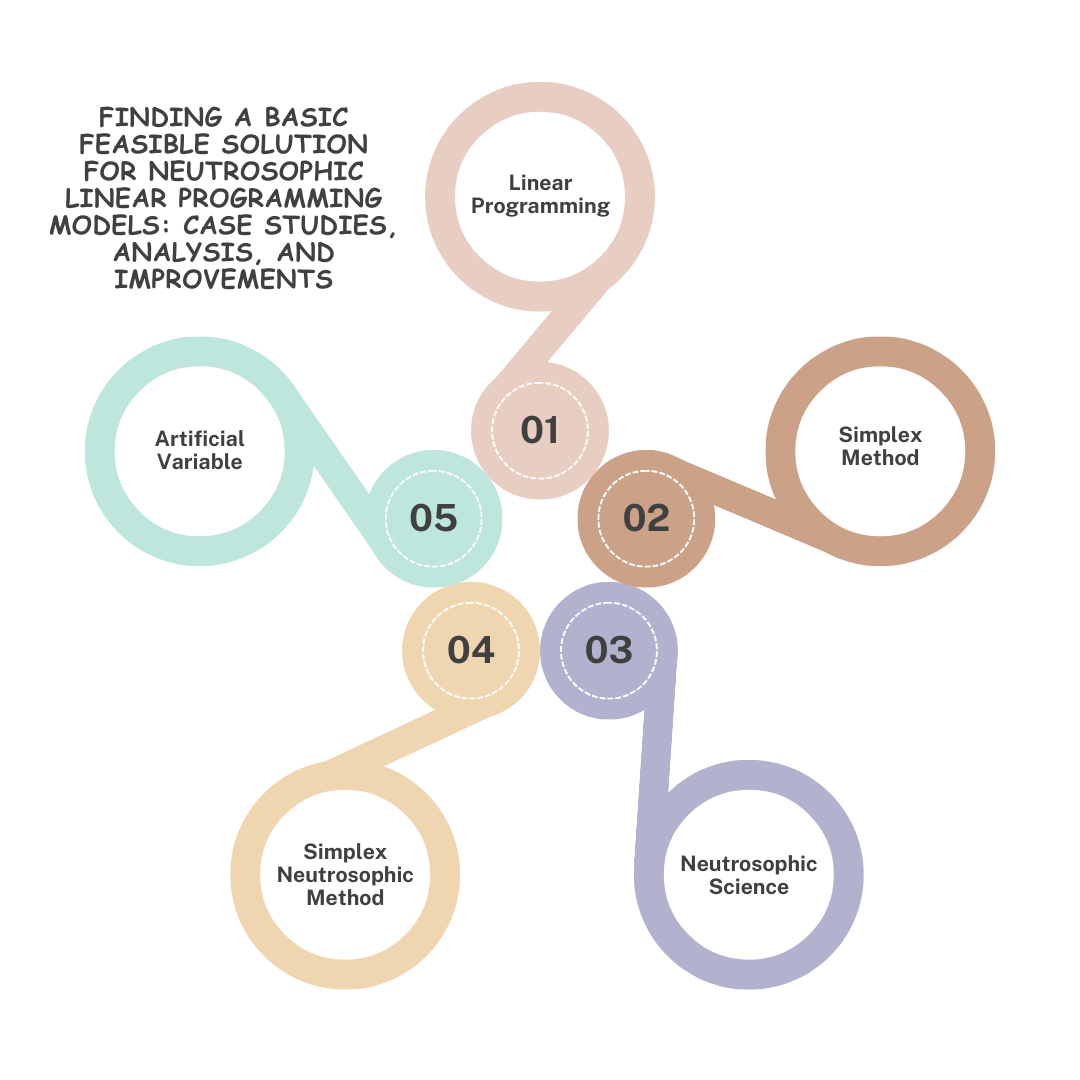Finding a Basic Feasible Solution for Neutrosophic Linear Programming Models: Case Studies, Analysis, and Improvements
Main Article Content
Abstract
Since the inception of operations research, linear programming has received the attention of researchers in this field due to the many areas of its use. The focus was on the methods used to find the optimal solution for linear models. The direct simplex method, with its three basic stages, begins by writing the linear model in standard form and then finding a basic solution that is improved according to the simplex steps until We get the optimal solution, but we encounter many linear models that do not give us a basic solution after we put it in a standard form, and here we need to solve a rule through which we reach the optimal solution. For these models, researchers and scholars in the field of operations research introduced the simplex method with an artificial basis, which helped to Find the optimal solution for linear models, given the importance of this method and as a complement to the previous research we presented using the concepts of neutrosophic science. In this research, we will reformulate the simplex algorithm with an artificial basis using concepts of neutrosophic science.
Downloads
Article Details

This work is licensed under a Creative Commons Attribution 4.0 International License.





